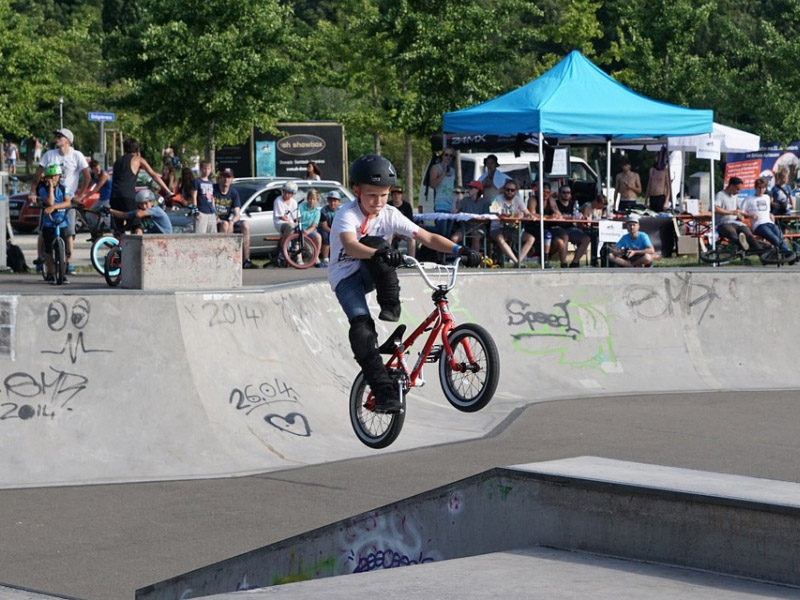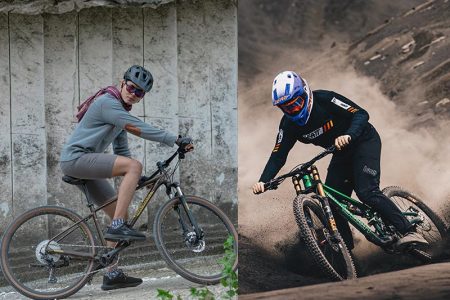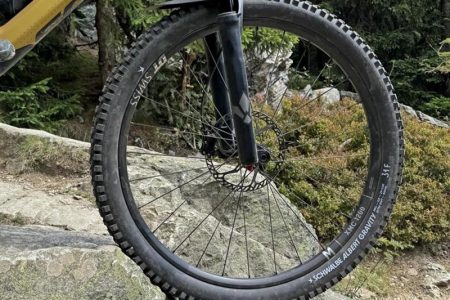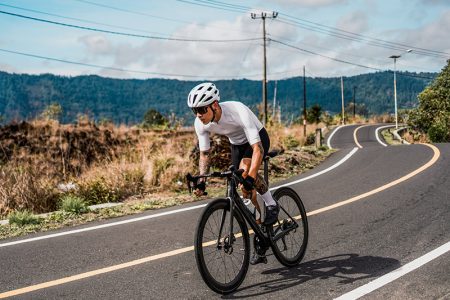Kids are naturally drawn to adventure, movement, and fun, so it’s no surprise that many of them fall in love with BMX bikes. As screen time rises, finding outdoor activities that capture your child’s attention can be tough. But BMX bike riding offers a thrilling, healthy alternative that supports physical fitness, motor skills, and social connections.
Ready to dive in? Stick around as we guide you through essential BMX skills, beginner-friendly tricks, and safety must-knows to get your little rider rolling.
Mastering the Basics: Fundamental BMX Skills for Kids
Every great BMX rider starts with the same thing—mastering the fundamentals. For beginners, especially kids just starting their journey on a BMX bike, these foundational skills are not only essential for progress but also for building confidence and safety. Let’s break them down in a way that’s easy to follow and fun to practice.
1. Balancing the Riding Position
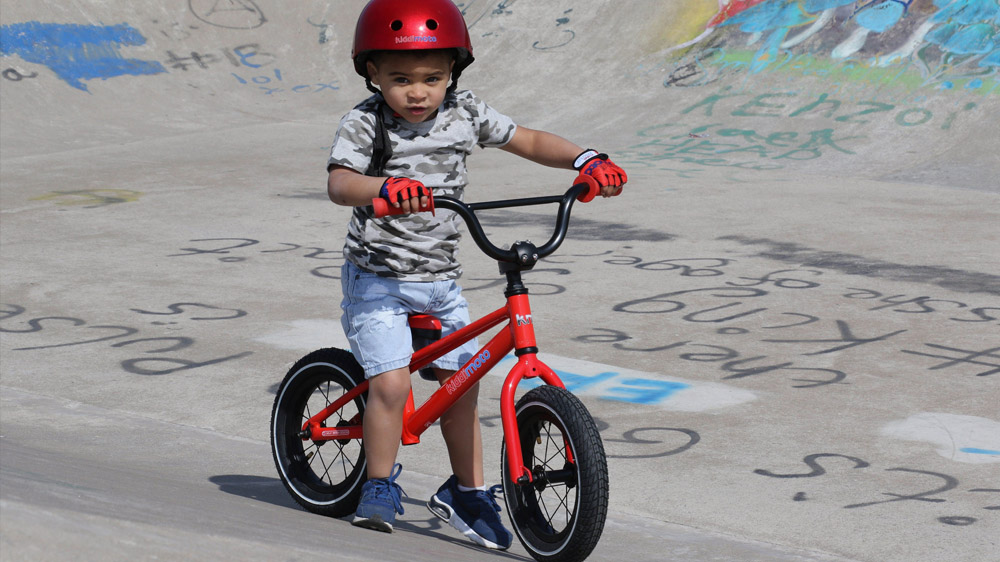
Balance is the cornerstone of all BMX riding. It allows kids to control their movements, react to obstacles, and stay upright while exploring different terrains.
- Feet Placement: Feet should be shoulder-width apart, resting flat and centered on the pedals. This ensures stability and prepares the rider for quick reactions.
- Knee Flex: Slightly bent knees help act as natural shock absorbers when riding over bumps or during landings.
- Upper Body: Keep arms relaxed but firm on the handlebars. The body should lean slightly forward, not too rigid, not too loose.
- Head Position: Looking ahead rather than down keeps balance and gives better awareness of surroundings.
You can practice this by having your child stand still on the bike while balancing or rolling slowly in a straight line in a safe, open area.
2. Pedaling & Braking
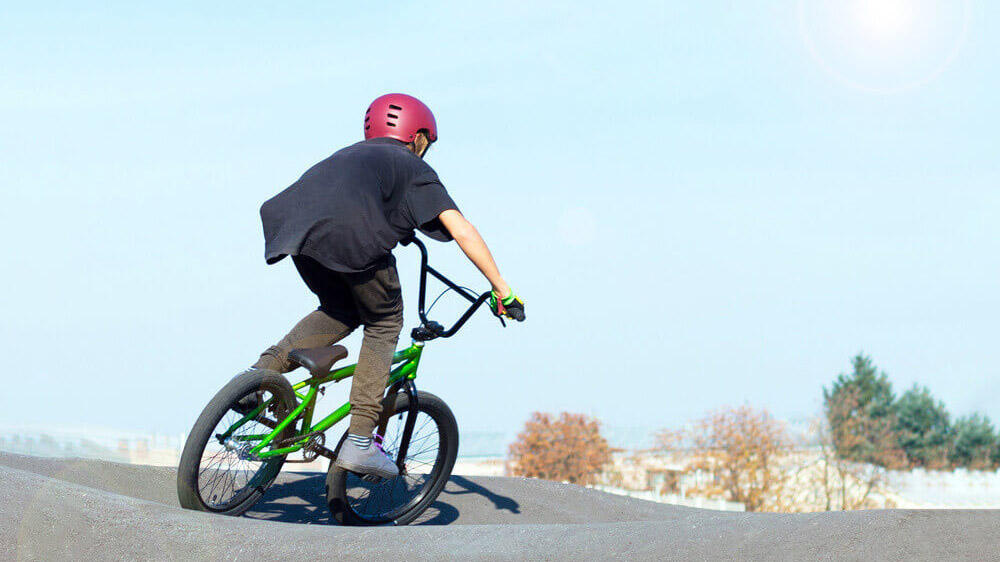
Before attempting tricks or even basic maneuvers, children must learn how to pedal smoothly and stop confidently.
- Smooth Pedaling: Teach your child to pedal in a circular motion, which is more efficient than simply pressing down hard. Smooth pedaling helps them maintain a consistent speed and reduces fatigue.
- Understanding Brakes: Most BMX bikes come with a rear handbrake. Teach kids to use the rear brake gently to avoid sudden stops or skidding.
- Practice Stops: Set up short rides where your child needs to stop between cones or markers to practice braking control.
Understanding how to start, maintain momentum, and stop safely makes a huge difference in confidence and accident prevention.
3. Turning & Cornering
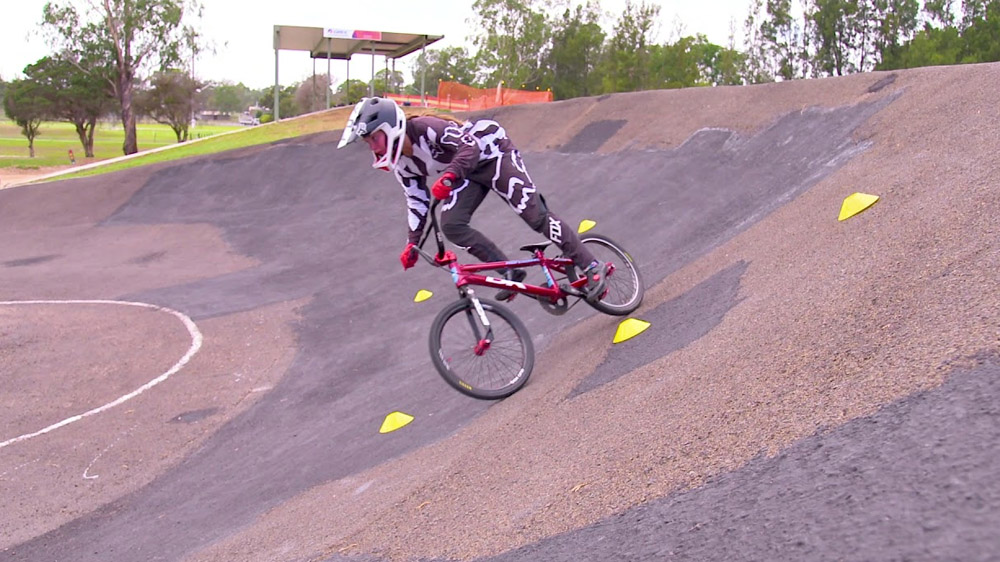
Turning involves more than just moving the handlebars. It requires weight shifting and visual focus.
- Approach: Slow down slightly before the turn to gain better control.
- Body Movement: Lean the bike into the turn, but keep your body upright. This balance helps maintain traction.
- Eyes on the Exit: Looking where you want to go, rather than directly at your front tire, naturally guides the bike through the turn.
- Practice Drill: Use cones or chalk to mark a simple slalom course so your child can practice turning left and right with increasing speed.
3 Beginner BMX Tricks Every Kid Can Try
Once your child feels confident with the basic riding techniques, they might be eager to take their skills to the next level. These tricks may look impressive, but with proper steps and practice, even young beginners can start learning them safely.
1. Bunny Hop
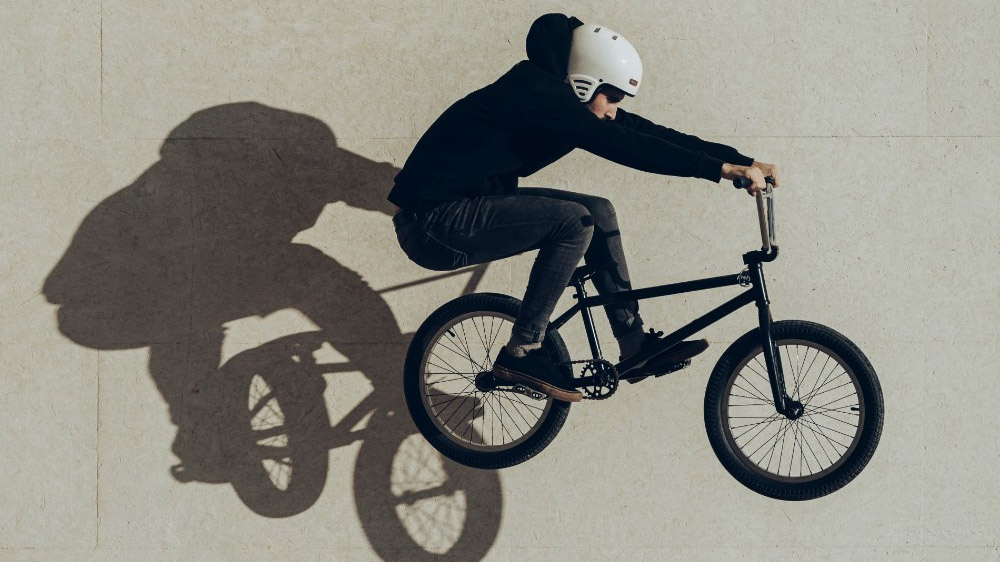
The bunny hop is one of the first tricks every BMX rider should learn. It teaches timing and total bike control.
How to practice:
- Ride at a steady, moderate speed.
- Crouch down slightly on the bike, bending the knees and elbows.
- Pull up the handlebars firmly to lift the front wheel.
- As the front wheel lifts, use your legs to push the pedals and lift the rear wheel.
- Try to land both wheels at the same time.
Start by hopping small, just an inch or two off the ground. As kids grow more confident, they can work toward higher jumps.
3. Manual
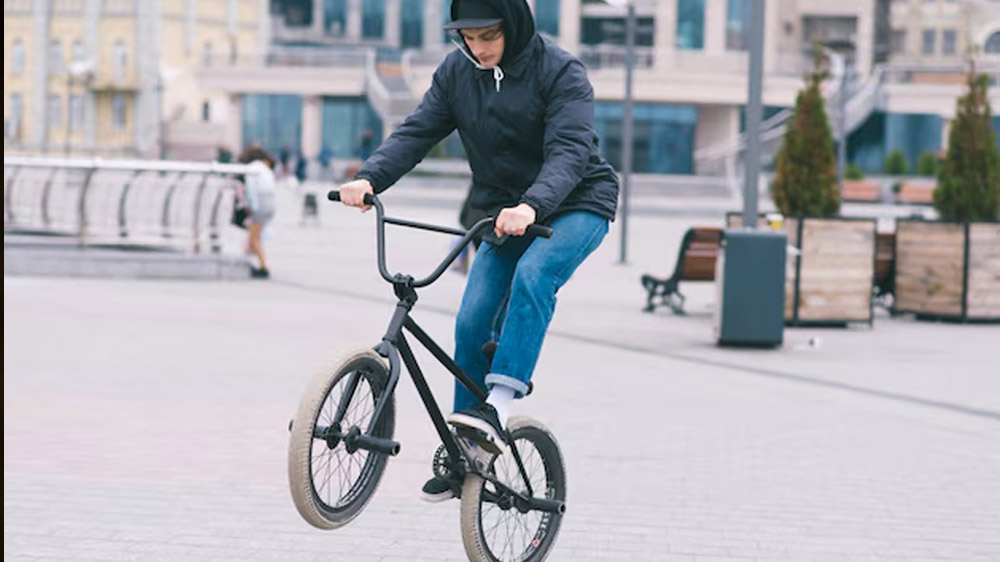
The manual is like a wheelie, but without pedaling. It’s all about balance and control on the back wheel.
How to practice:
- Begin with a rolling start—not too fast.
- Pull back gently on the handlebars while shifting body weight toward the rear wheel.
- Keep arms straight and balance using body movements and leg strength.
- Try to hold the position for a second or two, then let the front wheel come down smoothly.
It’s okay if kids don’t hold the manual for long at first. Focus on staying balanced and not over-leaning.
3. Fakie
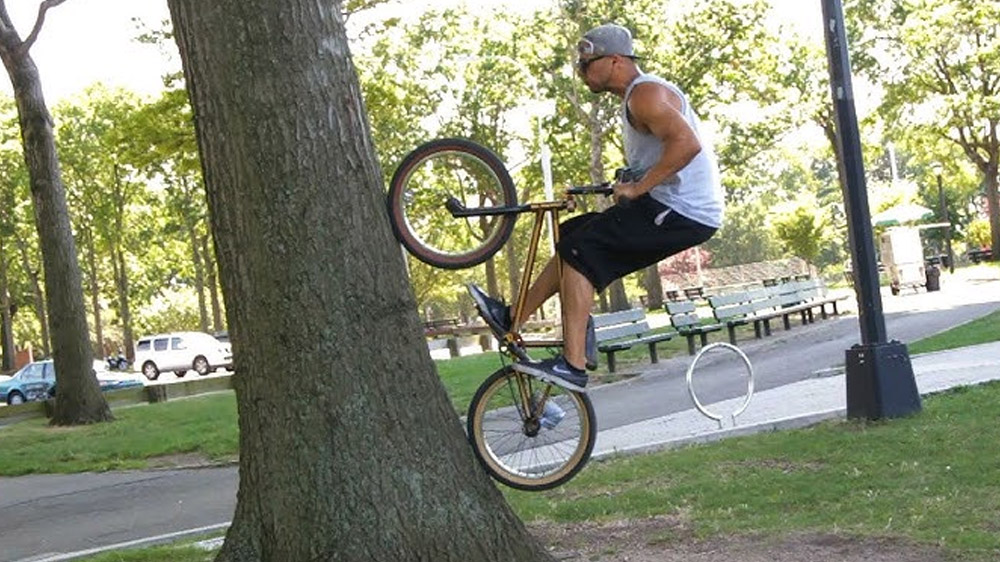
A fakie means riding backward—a fun and tricky move that improves coordination and bike handling.
How to practice:
- Ride up to a wall or slight incline and let the bike roll backward.
- Keep the pedals moving backward (if the bike allows), and maintain balance with gentle handlebar control.
- Once balanced, slightly turn the bars and shift the weight to roll forward again.
This trick can feel awkward at first, so encourage your child to stay relaxed and try it a few times each session.
Read also: BMX and DJ Bikes Beginner’s Guide
BMX Safety Tips: Ride Smart, Stay Safe
While BMX riding is all about fun and excitement, safety is the most important skill every rider should learn first. Here are simple yet essential safety tips explained clearly for beginners and their parents.
1. Wear Protective Gear
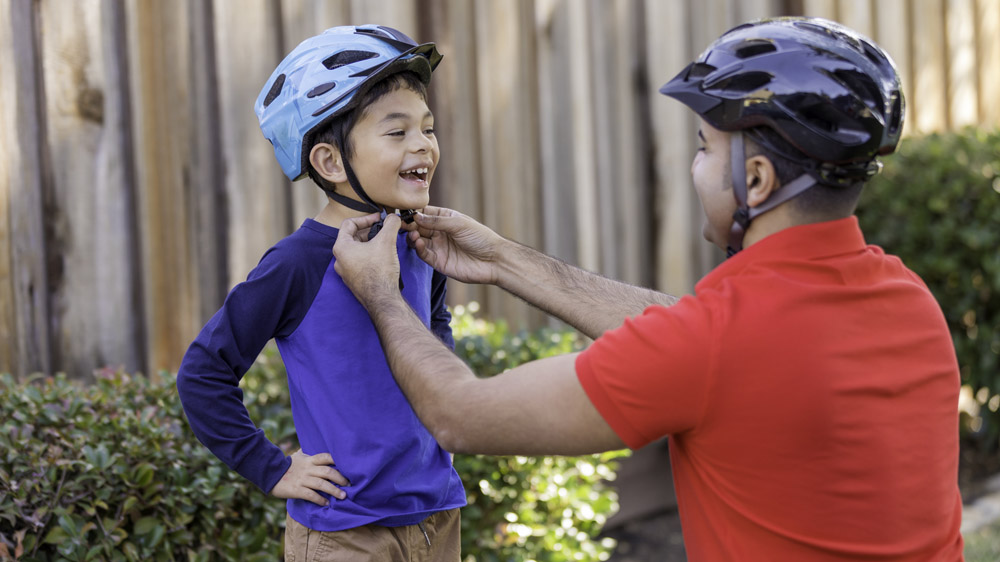
Protective gear is like a superhero suit for BMX riders—it helps shield them from injury if they fall or crash. Here’s what your child should always wear before hopping on their bike:
- Helmet: Choose a helmet that fits snugly and is certified for BMX or skate use. It should sit level on the head, not tilted back, and the strap should be snug but comfortable under the chin.
- Knee and Elbow Pads: These help cushion joints and prevent scrapes when your child is practicing new skills or riding on rough surfaces.
- Gloves: Not only do gloves protect hands in case of a fall, but they also give a better grip on the handlebars, especially if your child’s hands get sweaty.
2. Maintain the BMX Bike
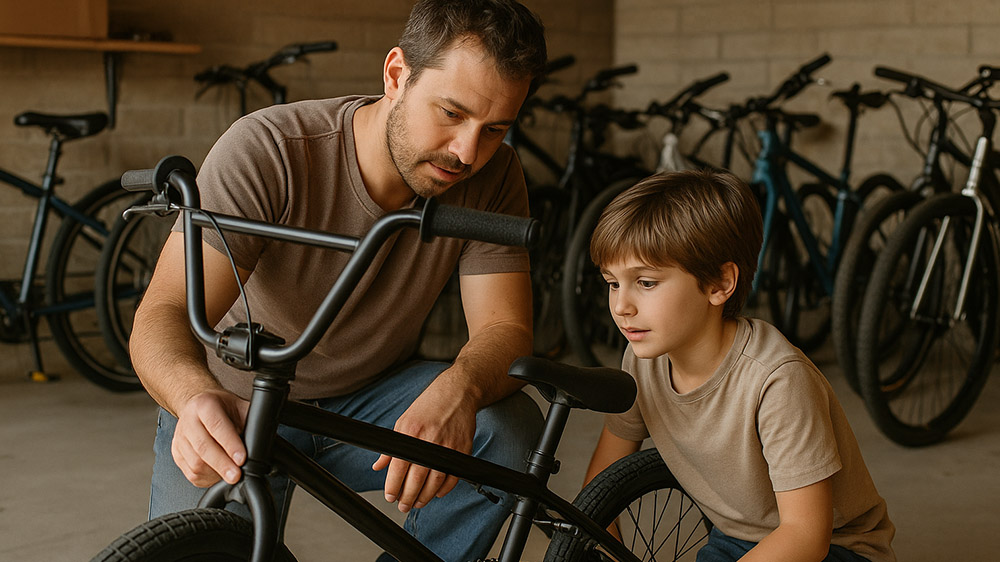
A well-maintained bike is a safer bike. Help your child check their BMX bikes regularly before riding:
- Tires: Squeeze the tires to check pressure. If they feel too soft or flat, they might need air. Proper tire pressure helps with control and balance.
- Brakes: Teach your child how to squeeze the brakes and check that they engage properly. Faulty brakes can make stopping hard, especially on hills or during tricks.
- Chain and Bolts: Make sure the chain is clean and well-lubricated. Also, check that the handlebars, seat, and wheels are tightly fastened and not wobbly.
3. Supervise and Set Safe Boundaries
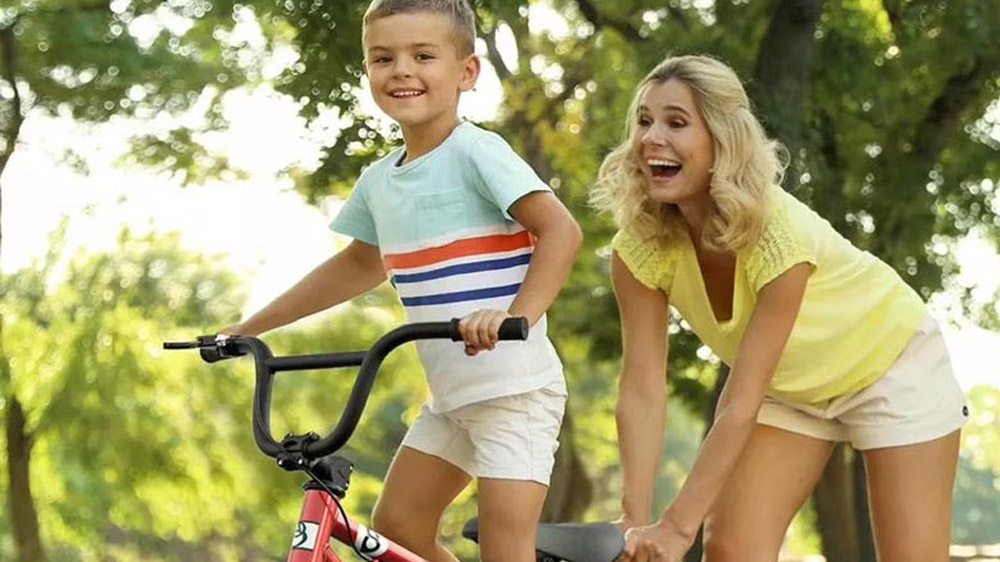
Especially when your child is new to BMX, adult supervision and guidance are essential:
- Start in Safe Areas: Choose open spaces like quiet parks, empty parking lots, or dedicated BMX beginner zones. Avoid roads or places with heavy foot traffic.
- Set Rules: Teach your child to always watch for obstacles like rocks, holes, or people nearby. Encourage them to ride at a pace that feels safe and manageable.
- Ride with Friends or Adults: BMX is more fun and safer when your child rides with others who can help if needed.
Being present and supportive as your child learns builds trust and helps them progress with confidence. By following these beginner-friendly safety tips, your child can enjoy all the thrills of BMX biking while staying protected. Safe riding habits last a lifetime—and they start with you.
Wrapping Up: Let the BMX Adventures Begin
Learning to ride a BMX bike is more than just a hobby—it’s a gateway to adventure, resilience, and lifelong skills. From balancing and pedaling to mastering their first bunny hop, kids gain confidence with every ride.
By focusing on the fundamentals, encouraging safe practices, and letting kids progress at their own pace, parents can support their child’s BMX journey in the most rewarding way possible. So, gear up, head out, and let your child pedal into a world of fun, freedom, and fearless exploration on their very own kids BMX bike.









